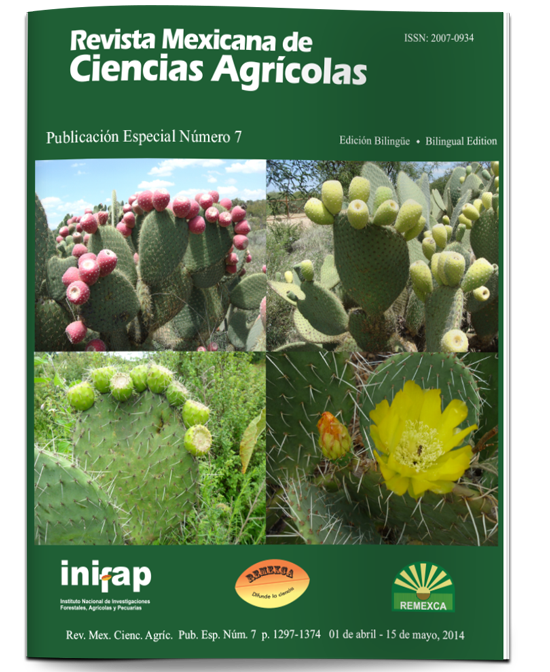V-236 P, cultivar of maize Pepitilla for low-mountain regions
DOI:
https://doi.org/10.29312/remexca.v0i7.1113Keywords:
Zea mays L., Pepitilla maize, landraceAbstract
Native maize occupy 70% of the cultivated maize in Mexico, because of its great adaptation to different ecological niches; a relevant case corresponds to the Pepitilla race, one of the most representative landraces of Guerrero, widely recognized by its excellent quality for making tortillas by the mass-boiled corn-tortilla traditional method. Its area of adaptation is the semi-warm region, restricted to conditions of low slope of the mountains of Guerrero, Oaxaca, Puebla and Morelos; however, it does have undesirable agronomic traits that cause lodging and low grain yield. In order to improve it, the program of INIFAP’s Experimental Field Iguala, started in 2000 a collection of landraces for preserving and improving them. After nine cycles of convergent-divergent-mass selection, applied to an integrated collection with ten selected native maize of Pepitilla race population, the variety V-236 P was obtained, which has better agronomic traits than the original, such population as plant height and lower cob, higher resistance to lodging, lower percentage of unproductive plants attributed to larger synchrony between their blooms, more uniform color that gives better quality grain tortilla, but the most relevant of this new variety V-236 P is that it has maintained the tortilla quality, purity of the breed, and has increased grain yield compared to the original population.
Downloads
Downloads
Published
How to Cite
Issue
Section
License
The authors who publish in Revista Mexicana de Ciencias Agrícolas accept the following conditions:
In accordance with copyright laws, Revista Mexicana de Ciencias Agrícolas recognizes and respects the authors’ moral right and ownership of property rights which will be transferred to the journal for dissemination in open access. Invariably, all the authors have to sign a letter of transfer of property rights and of originality of the article to Instituto Nacional de Investigaciones Forestales, Agrícolas y Pecuarias (INIFAP) [National Institute of Forestry, Agricultural and Livestock Research]. The author(s) must pay a fee for the reception of articles before proceeding to editorial review.
All the texts published by Revista Mexicana de Ciencias Agrícolas —with no exception— are distributed under a Creative Commons License Attribution-NonCommercial 4.0 International (CC BY-NC 4.0), which allows third parties to use the publication as long as the work’s authorship and its first publication in this journal are mentioned.
The author(s) can enter into independent and additional contractual agreements for the nonexclusive distribution of the version of the article published in Revista Mexicana de Ciencias Agrícolas (for example include it into an institutional repository or publish it in a book) as long as it is clearly and explicitly indicated that the work was published for the first time in Revista Mexicana de Ciencias Agrícolas.
For all the above, the authors shall send the Letter-transfer of Property Rights for the first publication duly filled in and signed by the author(s). This form must be sent as a PDF file to: revista_atm@yahoo.com.mx; cienciasagricola@inifap.gob.mx; remexca2017@gmail.
This work is licensed under a Creative Commons Attribution-Noncommercial 4.0 International license.



